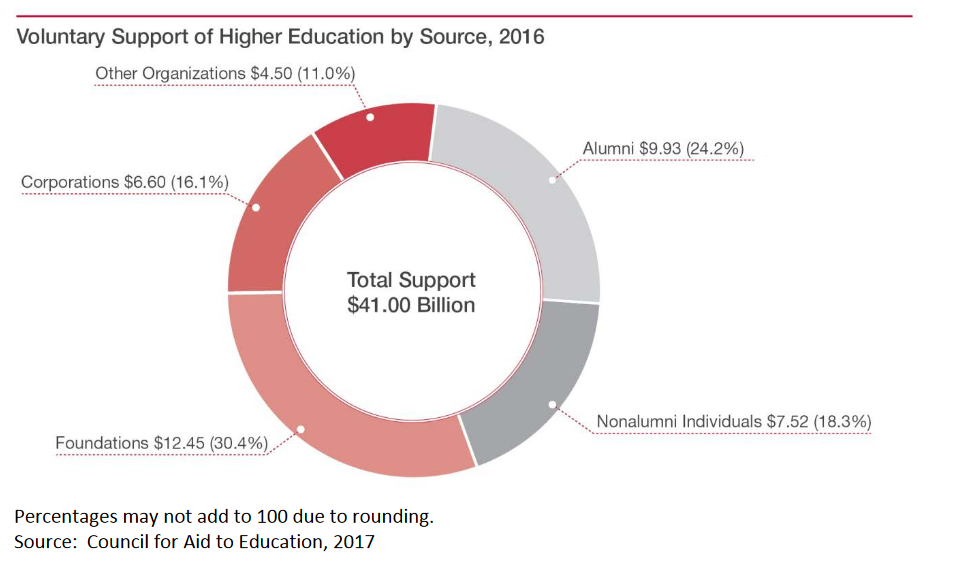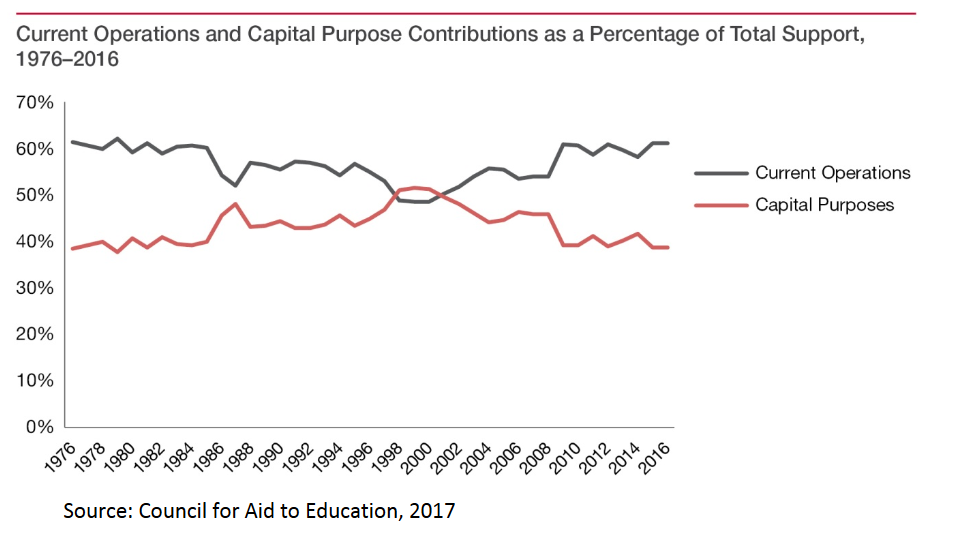fundraising
$41 Billion in higher education giving recorded by VSE survey for 2016
I’m a big fan of the Voluntary Support of Education (VSE) survey. For 50 years, it’s been the survey of record for higher education giving, both from individuals and grant makers. We just received the 2016 results from the Council for Aid to Education.
Here are a few highlights from this year’s VSE results and what I think they mean for us as fundraisers:
- Donors once again set a record for higher education support at $41 billion. But since this is only a bit higher than the $40.3 billion raised in 2015, the increase is almost completely erased when you consider inflation.
- One of the big factors here is a soft 2016 stock market, and the fact that we’re coming off successive years of big increases as well as some big art and property gifts that blew up the totals. The election and delays by donors as they watched what would happen could have also contributed. With the stock surges we’ve seen early this year, we could see some big movement in 2017 results. Two big contributors—tax policy and our fundraising strategies, will matter.
- Less than 1% of institutions continue to raise more than 27% of the funds. This “Matthew Effect” is a continuing trend in higher education giving. That doesn’t mean that the other 99% of schools aren’t raising money, we just see mega-giving really concentrated in this elite group.
- Individual giving, at first glance, seems down. But there has been a massive increase in the impact of family foundations and donor-advised funds that we’ve all been hearing about. These really are gifts driven by individuals. When we look at institutions that itemized these sources, we find that personal giving would actually be up substantially for yet another year. Be sure that you are correctly accounting these gifts and tying stewardship to the individuals who drove them.

- Alumni participation is down once again. This is definitely impacted by larger donor rolls and our ability to stay in touch with alumni, but donor counts are also down at many institutions.
- Giving to current operations has really pulled away from capital support over the past 20 years. This is good news for fundraisers looking to address current needs.

- The survey data show a real diversification of donor sources at top institutions. Parents and non-alumni friends of institutions are an increasing part of higher education giving.
It’s important to recognize that the VSE survey primarily tracks actual receipts by institutions, not overall commitments. We’re in the middle of a giant wealth transfer right now, and many institutions are also booking significant legacy commitments which are not covered in this survey and will be shown decades from now as those gifts come to bear.
With the VSE’s annual publication (and even better, a VSE Data Miner account), you can benchmark your institution and see how you compare to peers. I’ve also found that the standardized data collected by the VSE can be a great way to look at your own institution’s trends. Giving staff rosters and database systems change, but the VSE’s reporting definitions remain steady—so if someone at your institution is consistently reporting your results, the data they store on your institution can be very helpful to track trends.
Read the full VSE press release at the Council for Aid to Education.
Join us for a webinar on higher education giving
We’ll be going in depth with Ann Kaplan, director of the VSE survey and data miner, in our webinar on March 1 at 2:00 ET. Join us as we explore the results and what they mean for your fundraising strategy. Ann will also take your questions. We’ll see you there.
